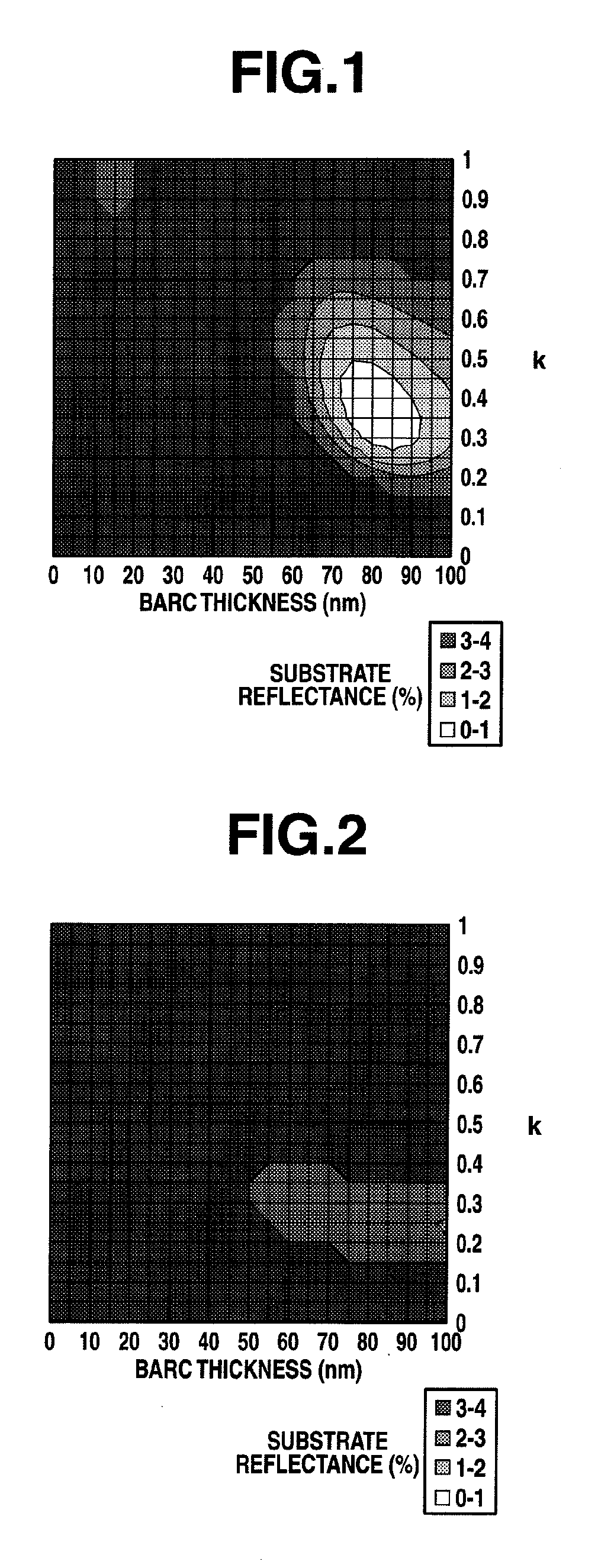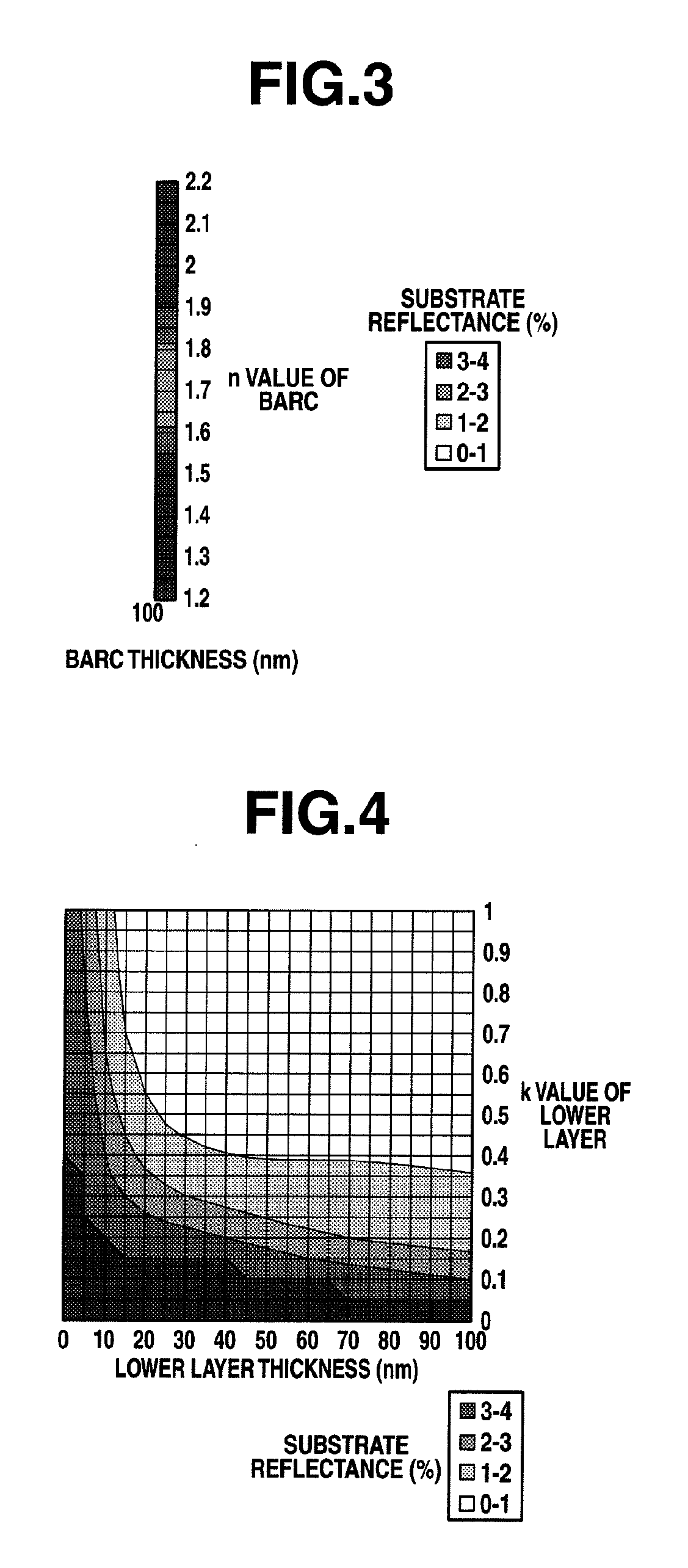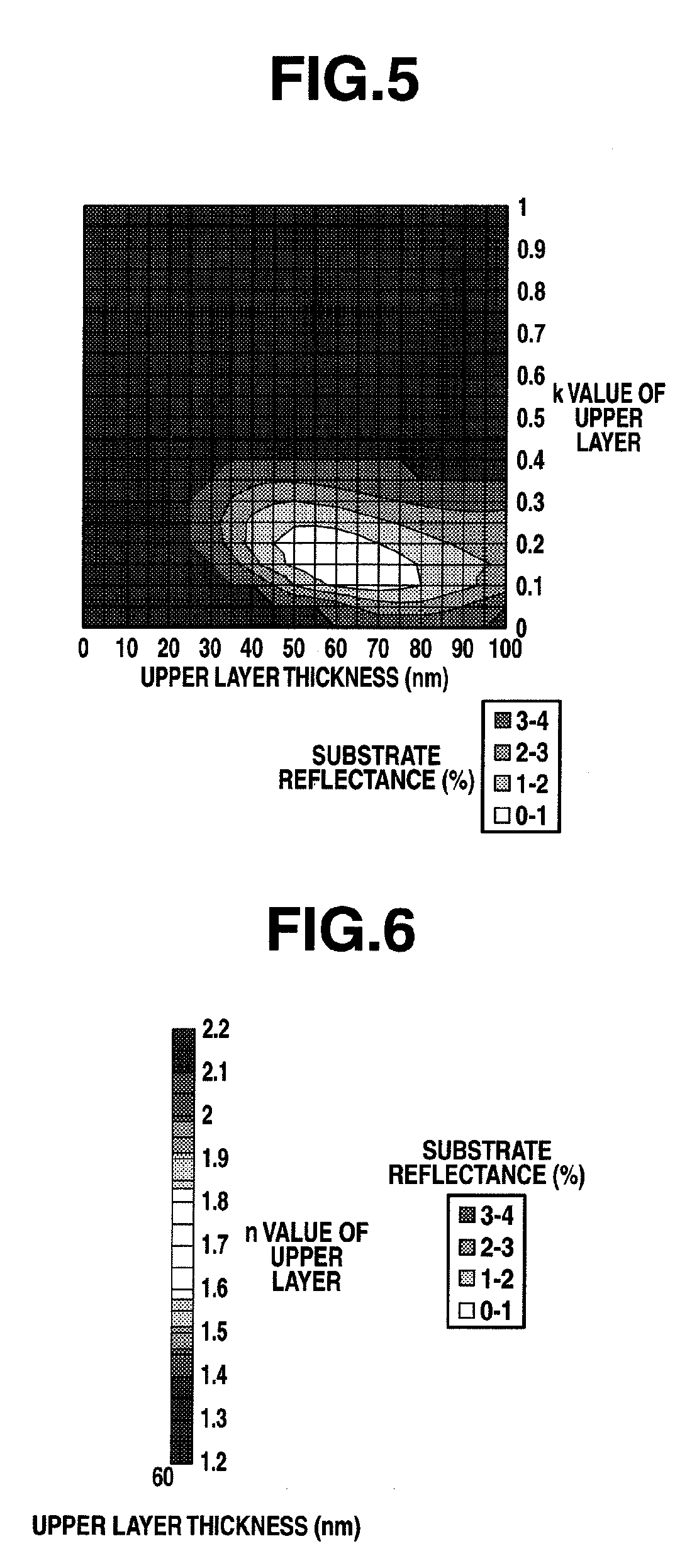Antireflective coating composition, antireflective coating , and patterning process
a technology of anti-reflective coating and composition, applied in the direction of optics, basic electric elements, electric devices, etc., can solve the problems of reducing resolution, affecting the etching speed of the arc, and the substrate's reflection of exposure light by the arc, so as to prevent the reflection of exposure light, reduce the etching time, and reduce the etching rate
- Summary
- Abstract
- Description
- Claims
- Application Information
AI Technical Summary
Benefits of technology
Problems solved by technology
Method used
Image
Examples
example
[0357]Synthesis Examples and Examples are given below together with Comparative Examples for further illustrating the invention although the invention is not limited thereby.
[0358]The weight average molecular weight (Mw) and number average molecular weight (Mn) of a polymer are determined by gel permeation chromatography (GPC) versus polystyrene standards, and a dispersity (Mw / Mn) is computed therefrom. The abbreviation AIBN denotes 2,2′-azobisisobutyronitrile, MEK denotes methyl ethyl ketone, and THF denotes tetrahydrofuran.
[0359]Monomers 1 to 12 used in Synthesis Examples are identified below.
Synthesis of Polymer A-1
[0360]In a nitrogen atmosphere, a flask was charged with 7.37 g of Monomer 1, 2.63 g of Monomer 12, 0.076 g of AIBN, 0.75 g of MEK, and 6.75 g of toluene to form a monomer solution. In a nitrogen atmosphere, another flask was charged with 0.75 g of MEK and 6.75 g of toluene and heated to 80° C. with stirring, after which the monomer solution was added dropwise over 4 h...
PUM
| Property | Measurement | Unit |
|---|---|---|
| refractive index | aaaaa | aaaaa |
| refractive index | aaaaa | aaaaa |
| mol % | aaaaa | aaaaa |
Abstract
Description
Claims
Application Information
 Login to View More
Login to View More - R&D
- Intellectual Property
- Life Sciences
- Materials
- Tech Scout
- Unparalleled Data Quality
- Higher Quality Content
- 60% Fewer Hallucinations
Browse by: Latest US Patents, China's latest patents, Technical Efficacy Thesaurus, Application Domain, Technology Topic, Popular Technical Reports.
© 2025 PatSnap. All rights reserved.Legal|Privacy policy|Modern Slavery Act Transparency Statement|Sitemap|About US| Contact US: help@patsnap.com



